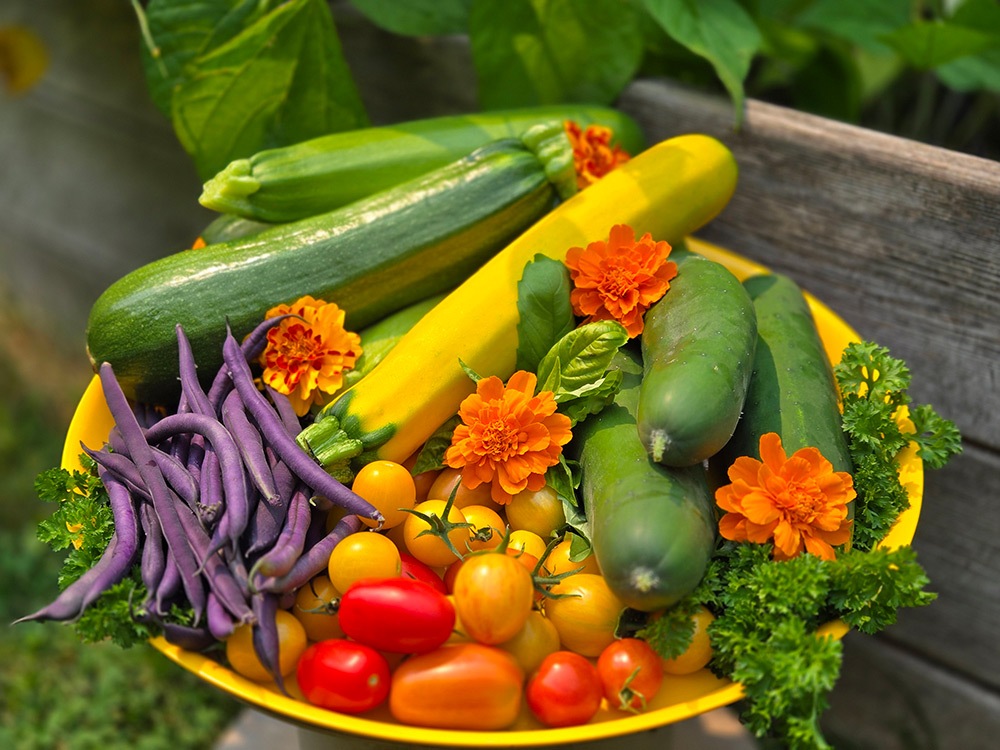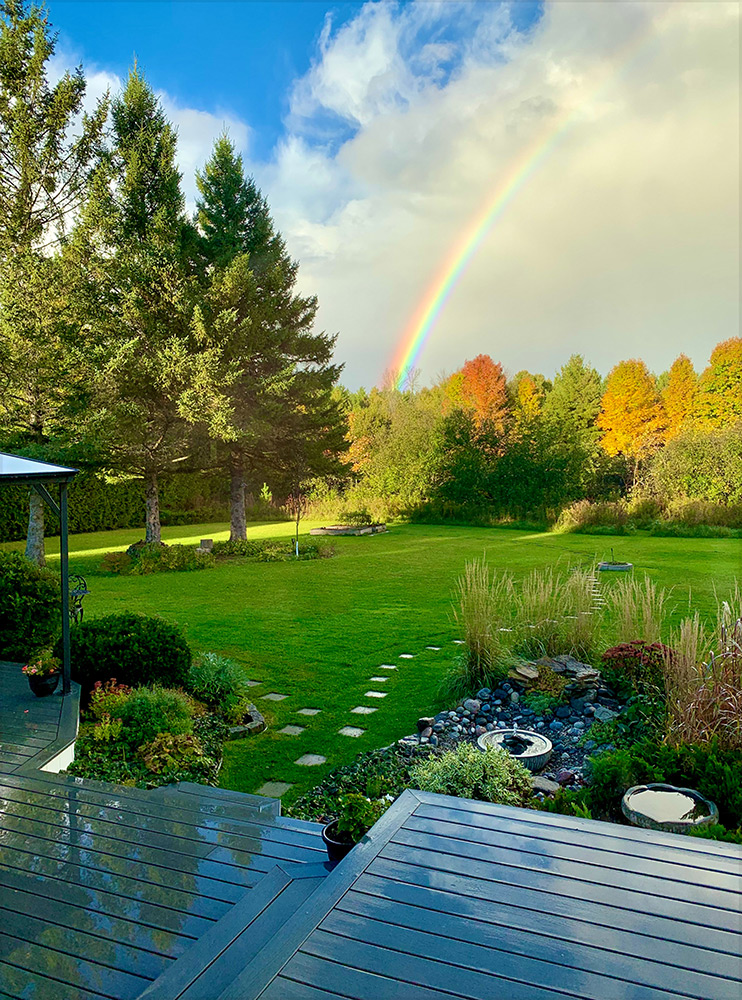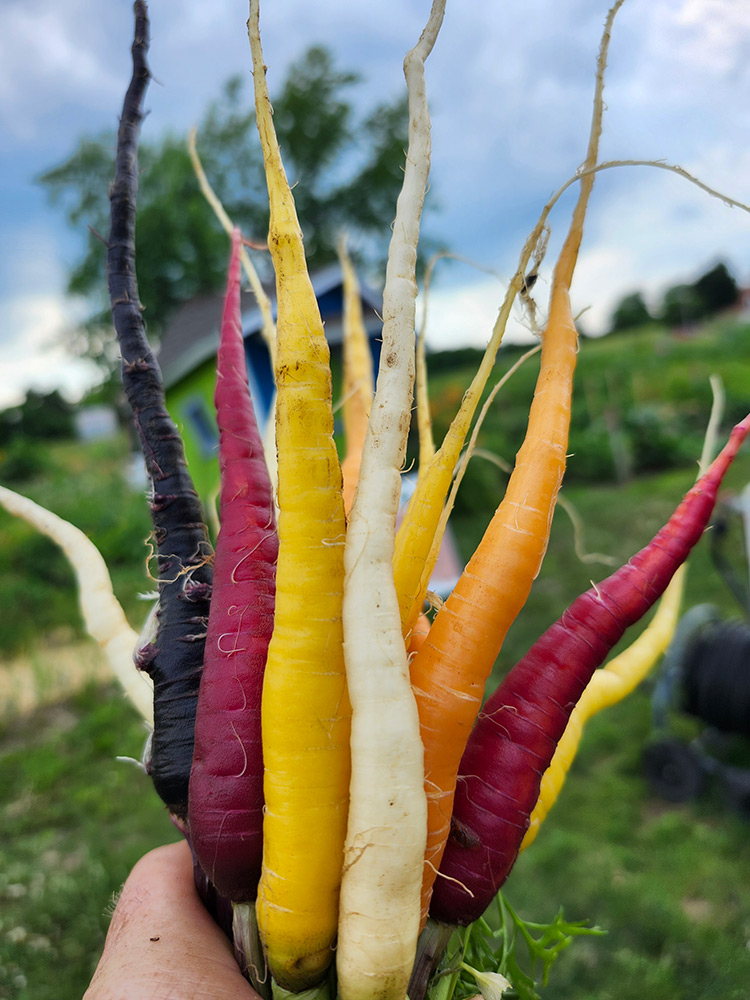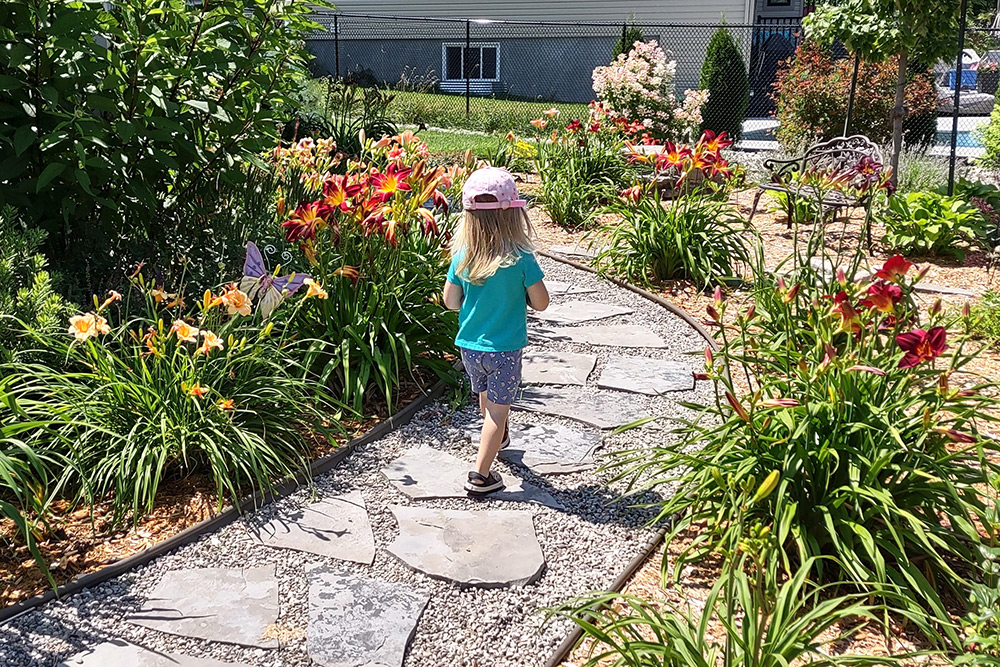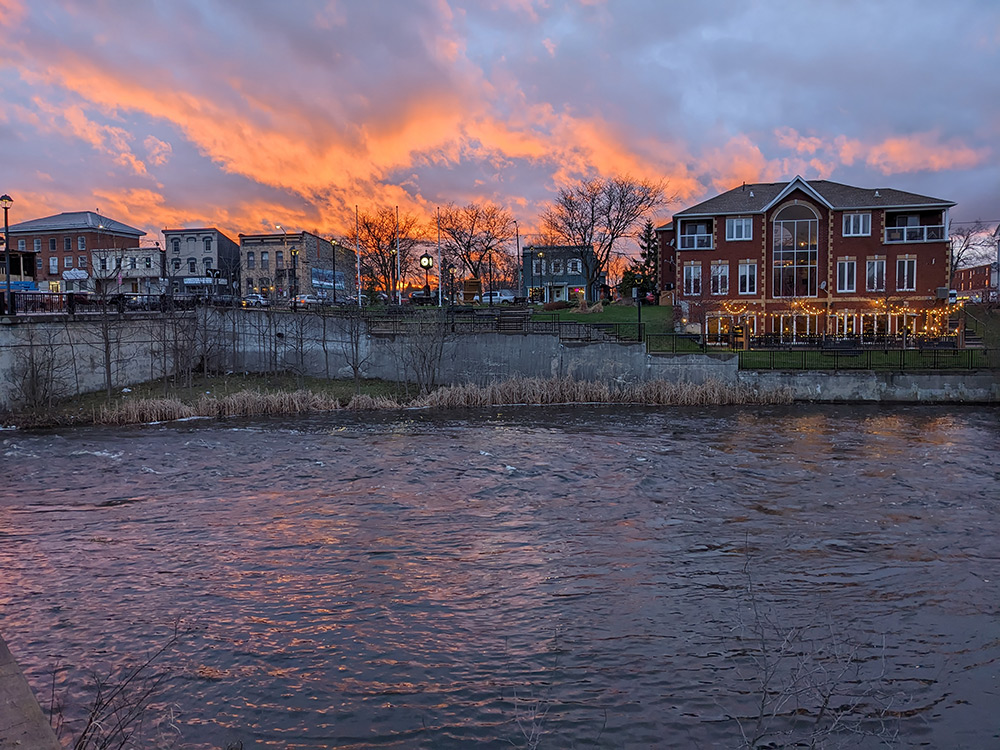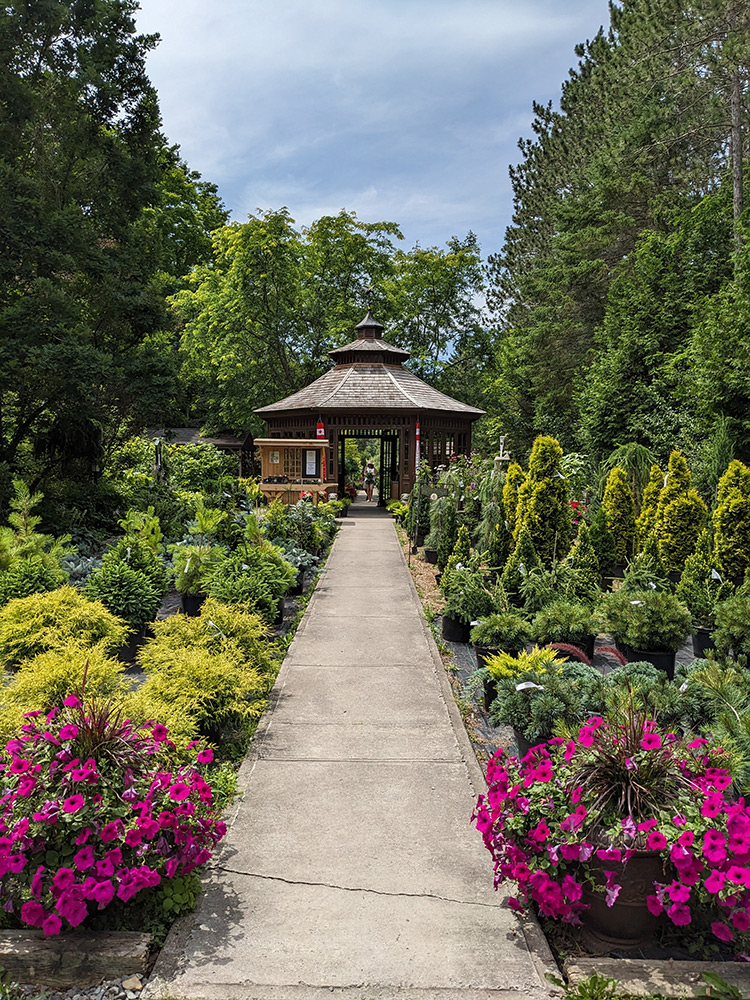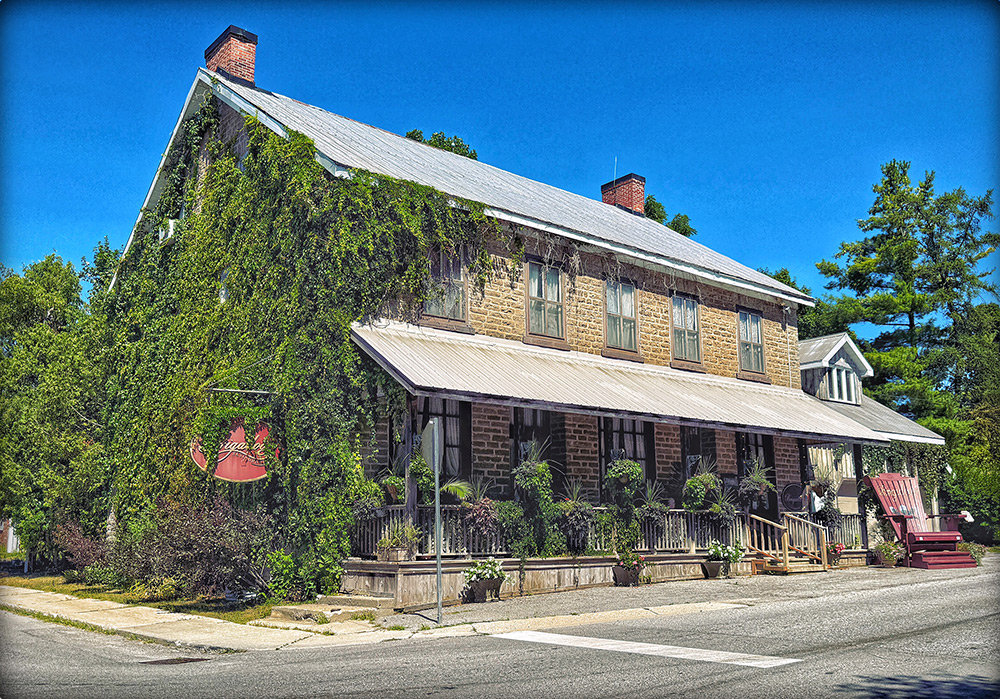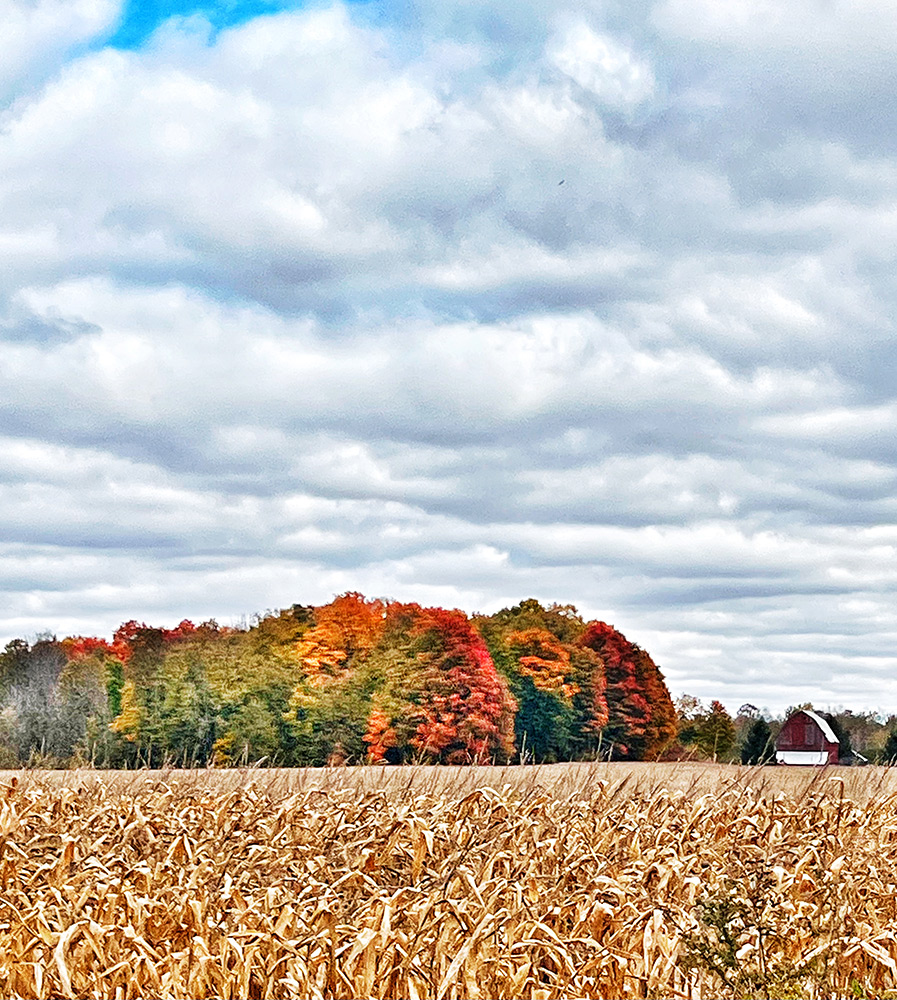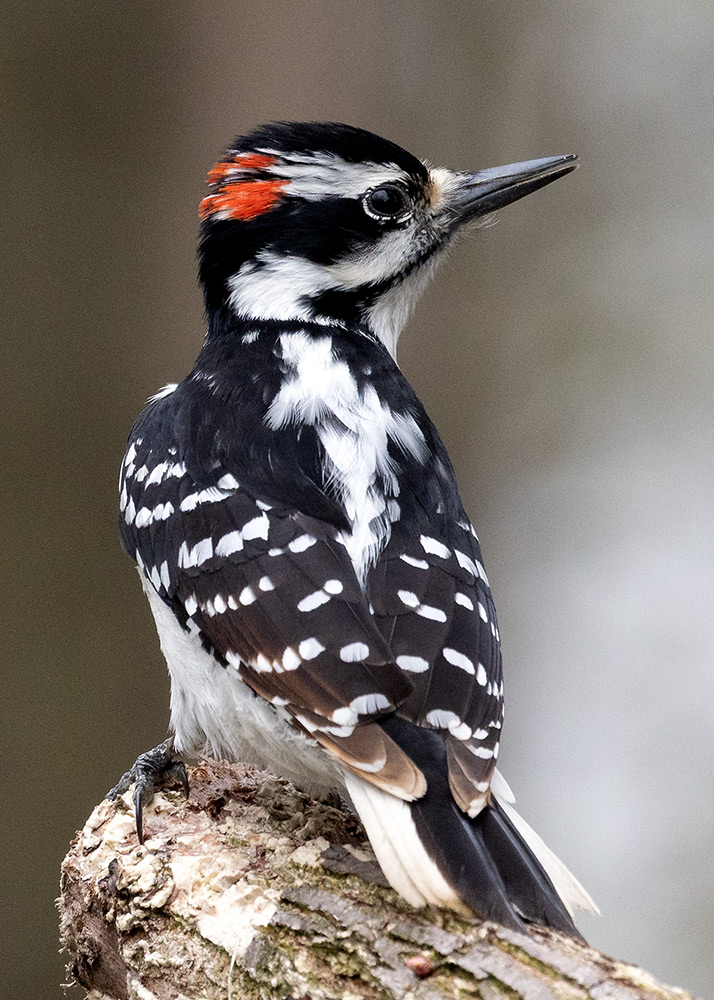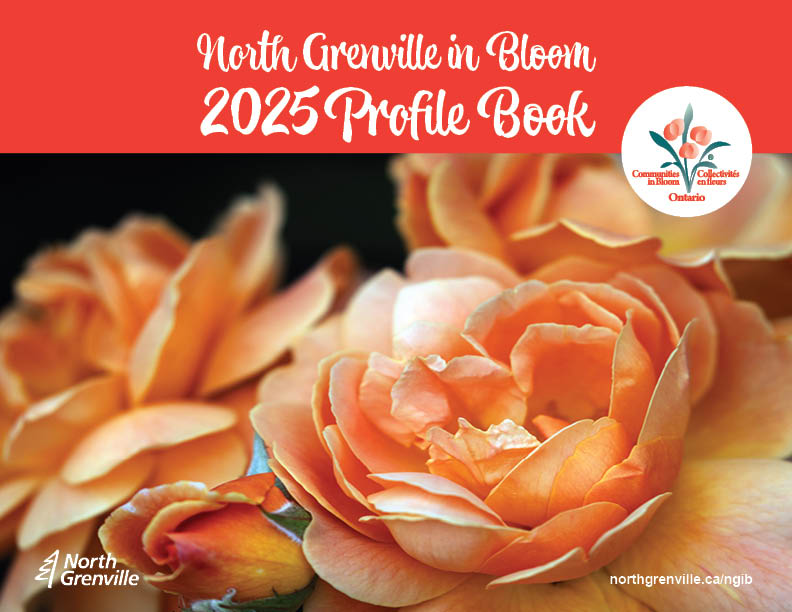
North Grenville in Bloom (NGiB) is a volunteer-driven committee initiative that proudly partners with the Municipality of North Grenville, local organizations, and residents to celebrate, enhance, and beautify our community through environmental stewardship and creative placemaking.
Since joining the Communities in Bloom Ontario program in 2023, North Grenville has blossomed - earning 3 Blooms in our inaugural year and advancing to 4 Blooms in 2024, and 5 Blooms in 2025! These achievements reflect the incredible dedication of our volunteers and the inspiring efforts of residents, businesses, and community groups across the municipality.
As we complete our third year, we are thrilled to continue building a greener, more vibrant North Grenville. The 2025 Communities in Bloom theme - Edible Gardens - invited us to grow together through local food, pollinator support, and community sharing. We can't wait to see what 2026 brings!
Whether you’re planting a single pot of herbs, transforming your storefront with flowers, or joining one of our community-led projects, there’s a place for everyone to bloom with us.
Previous Media Releases
North Grenville Achieves Five-Bloom Rating in 2025 Communities in Bloom Evaluation
North Grenville Launches 3rd Annual Communities in Bloom Photo Contest: “Edible Gardens”
North Grenville in Bloom 2024: Celebrating Our Community Through Photography
Communities in Bloom (CiB) is a provincial and national program that inspires communities to enhance their natural and built environments through beautification, sustainability, and civic pride. Municipalities of all sizes are evaluated annually on their efforts to improve the quality of life for residents through environmental stewardship, heritage conservation, and landscape enhancement.
Participating communities are evaluated by trained judges on six core criteria:
- Community Appearance
- Environmental Action
- Heritage Conservation
- Urban Forestry
- Landscape
- Floral Displays
Each category is scored based on community involvement, municipal leadership, and innovative approaches to local challenges. Communities are awarded a “Bloom Rating” (1 to 5 Blooms) based on their performance, with opportunities for special recognitions and national-level advancement.
The program’s goals include:
- Encouraging collaboration between residents, businesses, and local government
- Inspiring environmental and cultural initiatives
- Enhancing civic pride and volunteerism
- Supporting tourism and economic development
- Celebrating community strengths and sharing best practices across the country
Why It Matters:
Taking part in Communities in Bloom provides tangible and lasting benefits. Communities experience stronger volunteer engagement, greener public spaces, revitalized downtowns, and a stronger sense of identity. It's about more than flowers—it's about connection, pride, and sustainable growth.
July 7 – August 15, 2025
Theme: Showcasing What Makes North Grenville Bloom!
We’re inviting residents to help capture the beauty of North Grenville! Submit your best photos that reflect the spirit of our community and the themes that align with our Communities in Bloom journey.
Photo contest is now closed.
Photo Categories:
Gardens & Floral Displays
Local Heritage
Landscapes
Urban Forestry & Trails
Edible Gardens (2025 Theme!)
Photos submitted will be used to:
- Beautify our Communities in Bloom Profile Book
- Promote North Grenville in public campaigns
- Feature on our @NorthGrenvilleInBloom social media
- Celebrate our community in local and national submissions
Prizes will be awarded for first-place winners and runners-up in each category. A special “People’s Choice” Award will be selected through online voting on the North Grenville in Bloom Facebook page.
Deadline to submit: August 15, 2025
Do you know someone whose garden deserves to be celebrated?
Our North Grenville in Bloom Garden Spotlight Program is all about recognizing the passion, creativity, and care that local gardeners bring to our community. Whether it’s a vibrant front yard, a pollinator paradise, or a charming edible garden, we want to highlight the hard work that makes North Grenville bloom!
How It Works:
- Nominate a neighbour by emailing
This email address is being protected from spambots. You need JavaScript enabled to view it. - Selected gardens will receive a Garden Spotlight sign to proudly display at the end of their lawn.
- Our team will reach out to schedule a quick visit to take a photo of the garden and the gardener.
- We’ll ask a few questions about their gardening journey and feature them on our social media!
This is a fun and uplifting way to support local gardeners and inspire others to grow something beautiful.
Let’s celebrate the green thumbs in our community—nominate someone today!
July 1 – September 22, 2025
Get growing, exploring, and learning with our Bloom Bingo Challenge! This fun and interactive activity is open to all ages and encourages residents to connect with nature, support pollinators, grow local food, and beautify their spaces—all while having a little friendly fun.
Download any (or all!) of our four themed Bingo cards and complete activities at your own pace this summer.
Bingo Cards available for download:
- Pollinator Power Bingo – Support bees, butterflies, and biodiversity.
- Edible Garden Bingo – Grow your own food or discover local edible gardens.
- Invasive Species Busters Bingo – Learn to spot and safely remove invasive plants.
- Youth & Family Garden Bingo – A garden-friendly game for kids and families alike!
Complete as many Bingo cards as you like—each one is a new opportunity to learn and win!
Share to Win!
As you work through your Bingo cards:
- Snap photos of your progress
- Tag @NorthGrenvilleInBloom on Facebook
- Or email photos to
This email address is being protected from spambots. You need JavaScript enabled to view it.
Every photo counts as an entry into our Bloom Bingo Prize Draw, with special recognition for full card completions and creative submissions!
Let’s make North Grenville bloom—one square at a time!
Grow your green thumb with a little help from North Grenville in Bloom!
In partnership with the North Grenville Public Library, we’re offering free Gardening Kits to borrow and use at home. These kits are designed to help beginners get started, encourage hands-on learning, and promote a love of gardening throughout the community.
What’s in the Kit?
- Adult and child-sized gardening gloves
- Sturdy hand trowel
- Plant markers (reusable, to keep)
- Watering can or spray bottle
- Laminated beginner guide and planting chart
- Fun gardening activity sheet
Where to Get It:
Visit the North Grenville Public Library to check out a kit just like you would a book!
Please Note:
Kits are intended for temporary use and must be returned to the library so others can enjoy them too. Help us keep this community program growing strong by returning all items in good condition.
Whether you’re planting in a pot, a patch, or a raised bed this kit is your perfect place to start.
North Grenville in Bloom is excited to launch the Wildflower Rail Trail Adoption Plan, a new initiative inviting residents, families, community groups, and local businesses to adopt and care for small “postage stamp” wildflower gardens along the Rail Trail.
These vibrant gardens will showcase native plants, support pollinators, and create beautiful, educational stops for trail users to enjoy all season long.
What is a Postage Stamp Garden?
Postage stamp gardens are small, manageable planting spaces perfect for individuals or small groups to design, plant, and maintain. Each adopted plot will help create a continuous thread of natural beauty along the trail.
What’s Involved in Adopting a Garden?
- Choose a location along the Rail Trail (to be confirmed with our team)
- Plant and maintain your garden using pollinator-friendly wildflowers or native species
- Optional: add creative elements like natural edging, plant markers, or art!
- We encourage sharing photos and updates as your garden grows
North Grenville in Bloom may provide starter materials or signage as available.
Get Involved
If you or your group would like to adopt a Rail Trail wildflower garden, we’d love to hear from you!
Email us at
Together, we can grow a trail of beauty, biodiversity, and community pride!
North Grenville in Bloom is excited to launch the Fruit Tree Map & Pollination Initiative which is a community-driven project that helps residents understand one simple but powerful fact: pollination is local.
Most fruit trees (like apples, pears, plums, and cherries) need a pollination partner within 50–100 metres to produce fruit. That means what your neighbours grow directly affects your harvest and vice versa!
🌸 What Makes This Map Special: The Pollination Radius
The heart of this project is our interactive pollination radius map.
When you register your fruit tree, it will appear on the map with a visible pollination radius circle (50–100 metres) around it. This lets everyone see who has trees close enough to be potential pollination partners.
With this map you can:
✔️ See if your tree has nearby pollination partners
✔️ Help neighbours pollinate their trees by planting the right species
✔️ Decide what type of tree to plant next, based on what’s already growing nearby
✔️ Build stronger local ecosystems and better fruit yields across the community
How It Works
- Register your tree (apple, pear, cherry, plum, serviceberry, etc.)
- Choose what you’re comfortable with:
✅ Pollination partner only
✅ Seed sharing
✅ Fruit picking (by request) - Your tree (and its pollination radius) appears on the community map
- Optional: Get a small “Pollination Partner” yard sign to identify your tree
Why This Matters
- Increases natural pollination and biodiversity
- Helps local food systems thrive
- Connects gardeners, growers, and curious new tree planters
- Supports environmental stewardship and community resilience
Pollination Quick Tips
- Most apples, pears, plums, and cherries need a different, compatible tree nearby for pollination
- Tree distance matters: The closer, the better—within 50–100 metres
- Encourage pollinators: Plant wildflowers, avoid pesticides, and provide habitat for bees and beneficial insects
- Not all trees can pollinate each other: Some varieties require very specific partners (e.g., Japanese vs. European plums)
Get on the Map📍
Help us grow North Grenville’s pollinator-friendly, fruit-filled future!
Register your tree today by this form: https://form.jotform.com/251355668780063
View the map and see your neighbourhood’s pollination network: Fruit Tree Map
Together, let’s make every tree count.
In the weeks leading up to our Communities in Bloom (CiB) judges' visit, our North Grenville in Bloom (NGiB) team will be touring the Downtown Kemptville core and businesses along County Road 43 to admire and evaluate the beautiful floral displays showcased outside local storefronts.
How It Works
- Our CiB team will visit businesses throughout July and early August to view and photograph the different outdoor floral and garden displays.
- We know that display size varies; some businesses have charming window boxes, while others showcase larger planters or garden areas.
- This year, we’ll be evaluating displays by planter size categories, ensuring both small-scale and large-scale efforts are recognized and celebrated.
Special Recognition for Edible Plantings
Businesses that incorporate edible plants(like herbs, vegetables, or fruit-bearing plants) into their displays will receive special appreciation for promoting urban agriculture and biodiversity.
Award Categories (By Planter Size)
- Small-Scale Charm – For creative and colourful window boxes or small planters
- Medium Impact – For well-maintained mid-sized planters or grouped containers
- Large-Scale Bloom – For businesses with multiple or larger garden areas or installations
- Edible Excellence – For creative use of edible plants in any display size
Recognition & Promotion
- Selected businesses will receive a lawn sign or window decal to proudly display.
- Every business participating helps to enhance civic pride and community beautification!
Want to Nominate a Business?
You don’t need to apply as our team will be out scouting! But if you’d like to nominate a business you think deserves recognition, let us know:
Email:
Let’s celebrate the businesses that help make North Grenville bloom one window box, planter, and edible garden at a time!
North Grenville in Bloom is proud to promote an environmental initiative that uses bat houses to provide natural mosquito control in our community. Bats are amazing night-time insect hunters – a single little brown bat can catch up to 1,000 mosquito-sized insects in one hour! By attracting bats to our yards, we can reduce mosquito populations naturally. Supporting local bat populations with bat houses not only gives us a free pest control service, it also helps an endangered species (the little brown bat) recover from threats like white-nose syndrome. In short, installing a bat house is a win-win for both residents and the environment.
Community Partnership: Bat Houses Built Locally
This project is a collaborative effort between North Grenville in Bloom and the North Grenville Men’s Shed. The Men’s Shed – a local volunteer woodworking group – has generously crafted quality bat houses for our community. These bat houses follow proven designs (multi-chambered, rough interior, vented for airflow) to ensure they are attractive and safe roosts for bats. Through this partnership, we’re not only encouraging natural mosquito control, but also fostering community involvement. We thank the Men’s Shed volunteers for building these houses and contributing to local conservation.
Request a Bat House: North Grenville residents are invited to request a bat house for their property. If you’re interested in having a bat house installed at your home, please email
Environmental Benefits of Bats for Mosquito Control
Bats play a vital role in our ecosystem. All of our local bat species are insectivores, meaning their diet is made up entirely of insects – including mosquitoes, moths, beetles, and flies. An individual bat can eat 50% or more of its body weight in insects each night (pregnant mothers may eat 100% of their weight!). This voracious appetite makes bats one of nature’s best mosquito controllers. In fact, fewer bats lead to more mosquitoes, which can increase the risk of mosquito-borne illnesses like West Nile virus. By encouraging bats to live nearby, homeowners can enjoy fewer bites in the evening without relying as much on chemical repellents.
Beyond backyard comfort, bats provide broader environmental and economic benefits. By devouring night-flying insects, bats reduce the number of pests that damage crops and gardens. Scientists estimate that bats save farmers billions of dollars in pest control every year. Bats are truly our natural partners in balancing the ecosystem. Installing a bat house is an easy way to support these beneficial creatures. It provides them with a safe place to roost and raise their young, at a time when many bat populations are struggling due to habitat loss and diseases like white-nose syndrome (which has killed millions of bats in the past decade). By hosting a bat house, you are directly aiding in bat conservation while also reaping the benefits of natural mosquito control.
Bat House Installation Guidelines
Proper installation of your bat house is key to attracting a bat colony. Bats are particular about their roosting sites – factors like height, sunlight, and surrounding habitat all matter. Below are guidelines for mounting and caring for your new bat house, so you can create the most welcoming environment for our winged mosquito-eaters:
- Height & Placement: Install the bat house at least 12 to 20 feet above the ground. Higher is generally better for bats’ safety and flight. Bat houses can be mounted on the side of a building (such as a house, barn, or shed) or on a sturdy pole. A building mount often works best because walls retain daytime heat and provide a stable temperature for the bats. If using a pole, ensure it’s secure and tall enough. Do not mount bat houses in trees if possible – tree branches can shade the house too much and obstruct the bats’ flight path.
- Sunlight & Orientation: Bats love warmth. Position the bat house in an area that gets at least 6–8 hours of direct sunlight per day. In Ontario’s climate, a south or southeast facing orientation is ideal to catch morning and midday sun. A dark-colored house (or a coat of dark, non-toxic paint) can help absorb heat if needed. However, if the site is very exposed and summers are hot, partial sun can prevent overheating. (Tip: If you have two bat houses, you can mount one in full sun and one in more shade, to offer bats a choice of temperatures.)
- Location & Surroundings: Install the bat house in a quiet spot with open space around it. Bats swoop when they exit, so they need a clear flight path. Aim for a location that is at least 20 feet from obstacles like tree branches, wires, or poles. Avoid bright lights nearby; bats prefer a darker area (they will hunt near lights where insects congregate, but they roost in darkness). It’s also beneficial if the bat house is relatively close to a water source such as a pond, stream, or wetland (bats often feed on insects near water). Keep the immediate area below the bat house clear or use landscaping (like a flowerbed) where a little bat guano won’t be a nuisance. Try not to place the house directly above doors, windows, or decks where people frequent – while bat droppings are not harmful and make great fertilizer, you probably don’t want them on your front step!
- Installation Timing: You can put up a bat house at any time of year, but the optimal time is late winter or early spring. This way it’s ready for bats returning from hibernation in spring, giving them a chance to discover it as they seek summer roosts. If you install later in summer, you might not see visitors until the next year. Bats are loyal to established roosts, so it may take a little patience to attract a new colony. It’s not uncommon for a bat house to remain empty for a year or two before bats move in. Don’t be discouraged – keep the bat house up through multiple seasons. Once a maternity colony finds your bat house and raises young there, those bats are likely to return year after year around the same time.
- Maintenance & Care: Bat houses are low-maintenance but not “set and forget.” Plan to check your bat house once or twice a year (during the off-season when bats are not present). Maintenance tasks include: ensuring all seams and crevices are sealed (caulk any cracks or splits to keep the interior dry and warm), and removing any wasp or insect nests that might appear inside. (Wasp nests can discourage bats from moving in – if you find one, wait until winter when wasps are dormant and bats have left, then safely clear it out.) Also brush out any debris if needed. Never disturb the bat house when it’s occupied – avoid opening it or banging on it while bats are roosting. There is generally no need to clean out bat guano from inside the house because well-designed bat houses have open bottoms that let droppings fall out. If guano accumulates on the ground and you want to collect it for garden use, you can do so with a small shovel (it makes an excellent fertilizer!). Otherwise, simply leave it to enrich the soil. Finally, if years pass with no bat occupancy, consider relocating the bat house to a new spot, or try painting it a slightly different color to adjust the temperature, or add a water feature nearby to attract more insects. Small adjustments can make a big difference in making the bats feel at home.
- Safety Note: Bats are wild animals and generally avoid people. You will likely never have a close encounter – at most you’ll notice them fluttering out at dusk to hunt. Do not handle bats if you find one grounded or in your house. If you discover an injured or sick bat, contact a local wildlife rehabilitator for guidance. Remember, bats are protected species. It is illegal to harm or kill bats in Ontario, and there is no reason to – they will not be a nuisance if left alone. In fact, you’ll rarely see them except at night on the wing. Enjoy their presence knowing they are hard at work keeping your yard bug-free!
What to Expect After Installation
Once your bat house is installed according to the guidelines above, it becomes a waiting game. When will bats arrive? It could be within the first summer, or it might take a couple of summers for bats to find the house. Bats have a strong sense of site fidelity – mother bats often return to the same roost each year. So if a colony adopts your bat house, you can look forward to yearly residents each warm season. You might first notice signs of bats such as a few droppings (guano) on the ground or staining on the bat house entrance. You may even hear quiet chittering noises at dusk. Typically, midsummer is when a new bat house is most likely to become active, as that’s when maternity colonies are settled in. By watching at twilight on warm nights, you might see your new “tenants” exiting to hunt. An occupied bat house can host anywhere from a dozen up to hundreds of bats, especially if it’s a multi-chamber design. Don’t worry – even a few bats can dramatically cut down the insect population in your area, and you won’t end up with “too many” bats; their numbers are limited by how much the house can hold and the available food supply.
If after two summers you still have no bats, consider the troubleshooting tips mentioned above (try a different spot, height, or orientation). Patience is often rewarded when it comes to bat houses. Even if it takes a while, by maintaining the bat house you are providing a potential home for bats that may desperately need new roosting sites as old trees and attic spaces disappear.
In the meantime, knowing you’ve set up a welcoming habitat for bats is something to be proud of. You’re contributing to North Grenville’s environmental health and enjoying natural mosquito control. With each new bat house installed, our community blooms a little brighter – and a little less buggy!
Additional Resources
For those interested in learning more, here are some helpful resources on bats and bat houses:
- Bat Conservation International – Bat Houses: Designs, research, and tips from a leading bat conservation organization njaes.rutgers.edumerlintuttle.org.
- Canadian Wildlife Federation – HelpTheBats Program: Information on helping bats in Canada, including the latest bat box research specific to our climate cwf-fcf.orgcwf-fcf.org.
- Ontario Bat Working Group: Local insight on bat species in Ontario and conservation efforts.
- North Grenville in Bloom Team: Contact us at
This email address is being protected from spambots. You need JavaScript enabled to view it. for any questions about this bat house initiative.
Together, let’s support our bat neighbors and enjoy a summer with fewer mosquitoes. Thank you for being a part of North Grenville in Bloom’s effort to build a greener, healthier community!
Protecting North Grenville’s natural beauty starts with knowing what doesn’t belong.
Invasive plant species are one of the biggest threats to North Grenville’s ecosystems. They grow aggressively, outcompete native species, disrupt biodiversity, and can even damage infrastructure and property. Through our Invasive Species Awareness Campaign, North Grenville in Bloom is helping residents learn to identify, report, and responsibly manage invasive plants in their own backyards and public spaces.
Why Invasive Species Are a Problem
- They spread quickly and dominate local plant life, choking out native wildflowers, shrubs, and trees.
- They reduce biodiversity, which harms pollinators, birds, and wildlife that rely on native plants for food and shelter.
- They can be harmful to people and pets—some cause skin irritation, are toxic if ingested, or increase fire risk.
- They are costly to control—municipalities and landowners spend thousands annually to manage them.
Not all weeds are invasive, and not all invasive species can be removed in the same way. That’s why proper identification and informed removal techniques are critical—cutting or disturbing certain species can actually cause them to spread further!
Helpful Tools to Identify Invasive Plants
Use these free apps to identify and report invasive species right from your phone:
- iNaturalist – Upload plant photos to get community-sourced identification help.
- Seek by iNaturalist – Kid-friendly and doesn’t require creating an account. Great for quick scans.
- EDDMapS – A mapping tool for reporting invasive species sightings across North America.
- PlantNet – Offers plant ID through photos and links to botanic data worldwide.
Once you’ve identified a plant, check local resources to confirm whether it's invasive and learn the best way to remove it.
Weed Control in Leeds and Grenville
The United Counties of Leeds and Grenville has a designated Weed Inspector responsible for enforcing the Weed Control Act and addressing complaints about nuisance weeds that may affect human health, safety, or well-being. More information about the Weed Inspector’s role and weed control procedures is available on the Counties’ website: www.leedsgrenville.com/en/government/weed-control.aspx
Common Invasive Species in Ontario
According to the Ontario Invasive Plant Council, here are just a few of the invasive plants currently found in our province:
- Garlic Mustard
- Dog-Strangling Vine
- Phragmites (European Common Reed)
- Japanese Knotweed
- Goutweed
- Norway Maple
- Wild Parsnip
- Buckthorn (Common & Glossy)
- Periwinkle
- Himalayan Balsam
- Purple Loosestrife
View the full list and profiles of these plants at: Ontario Invasive Plant Council Species List
What You Can Do
- Learn to identify invasive species in your garden and neighbourhood
- Avoid planting known invasives—check before you buy!
- Use proper techniques for removal—some require digging, others chemical treatment, and some should be left to professionals
- Share what you learn and help others spot invasive plants
- Support native plantings and restore disturbed areas with species that belong
Have questions or want to share a photo of a suspicious plant?
Email us at
Together, we can protect North Grenville’s environment, one plant at a time.
The judging process is designed to encourage communities to work together to create beautiful, sustainable, and environmentally responsible spaces to enhance the quality of life of their residents.
A team of trained judges will tour the community later this summer and evaluate it based on the following criteria:
- Environmental Action
- Floral Displays
- Heritage Conservation
- Landscaped Areas
- Tidiness
- Urban Forestry & Trails
Based on the evaluation, communities may be awarded ratings from one to five blooms, five blooms being the highest rating. Based on their ranking, communities can move on to the national and international competitions. Communities may also be eligible for special awards based on specific criteria such as sustainability, biodiversity, or community involvement.
We invite members of the community to play an active role in North Grenville’s submission for Communities in Bloom! Your participation can make a significant impact in several ways, such as:
- Assisting in structuring our tour to showcase the very best of our community
- Helping select winning entries for our photo contest through voting
- Leading initiatives like adopting planters throughout the municipality
- Proposing new ideas that promote community tidiness, environmental stewardship, and civic pride
Your contributions will help us shine as we continue to beautify North Grenville. Join us in celebrating our community’s spirit and making a lasting difference!
Who's listening
Check out the North Grenville in Bloom 2025 Profile Book
Click the image to view the full book!
(Book will open in a new tab)
Timeline
Planning & Registration
January - August 2025
January - August 2025
Garden Spotlight Program Launch
June 2025
Nominations open! Signs and features begin.
July 7 – August 15, 2025
Bloom Bingo Begins
July 1 – September 22, 2025
Get your cards at the library or online and start gardening!
Wildflower Rail Trail & Fruit Tree Mapping Ongoing
Summer 2025
Signage and updates continue across the trail and community.
Summer 2025
Community Clean-Up Pilot
August 4-8
Volunteer day ahead of the judges’ visit.
Judges’ Tour
August 13- 15, 2025
Let’s make North Grenville shine!
August 13- 15, 2025
Evaluation & Feedback from Judges
September 2025
Reviewing our 2025 efforts.
November 5, 2025
Monthly Brainstorming Resumes
Fall/Winter 2025
Open to all! Join our brainstorms for 2026.

